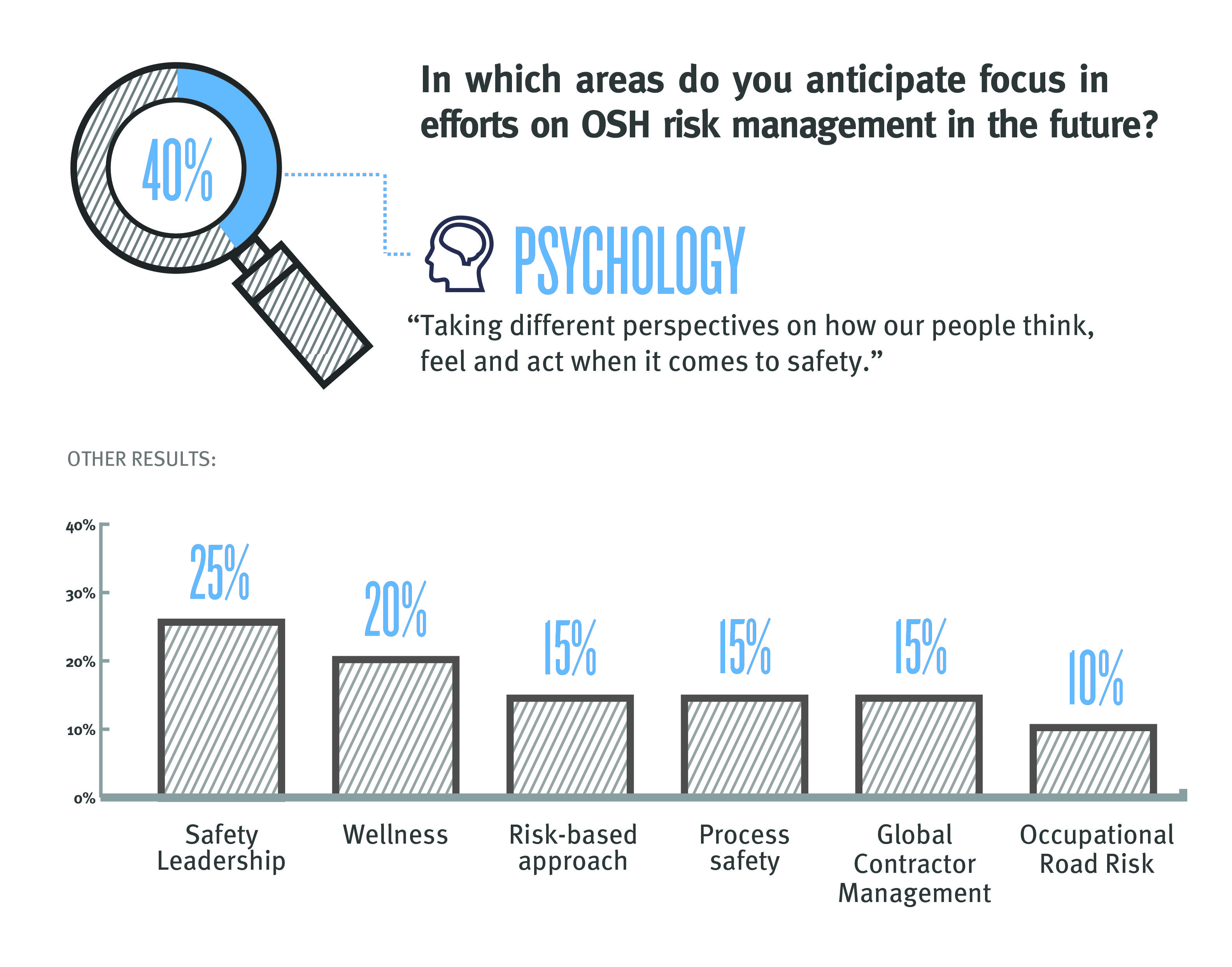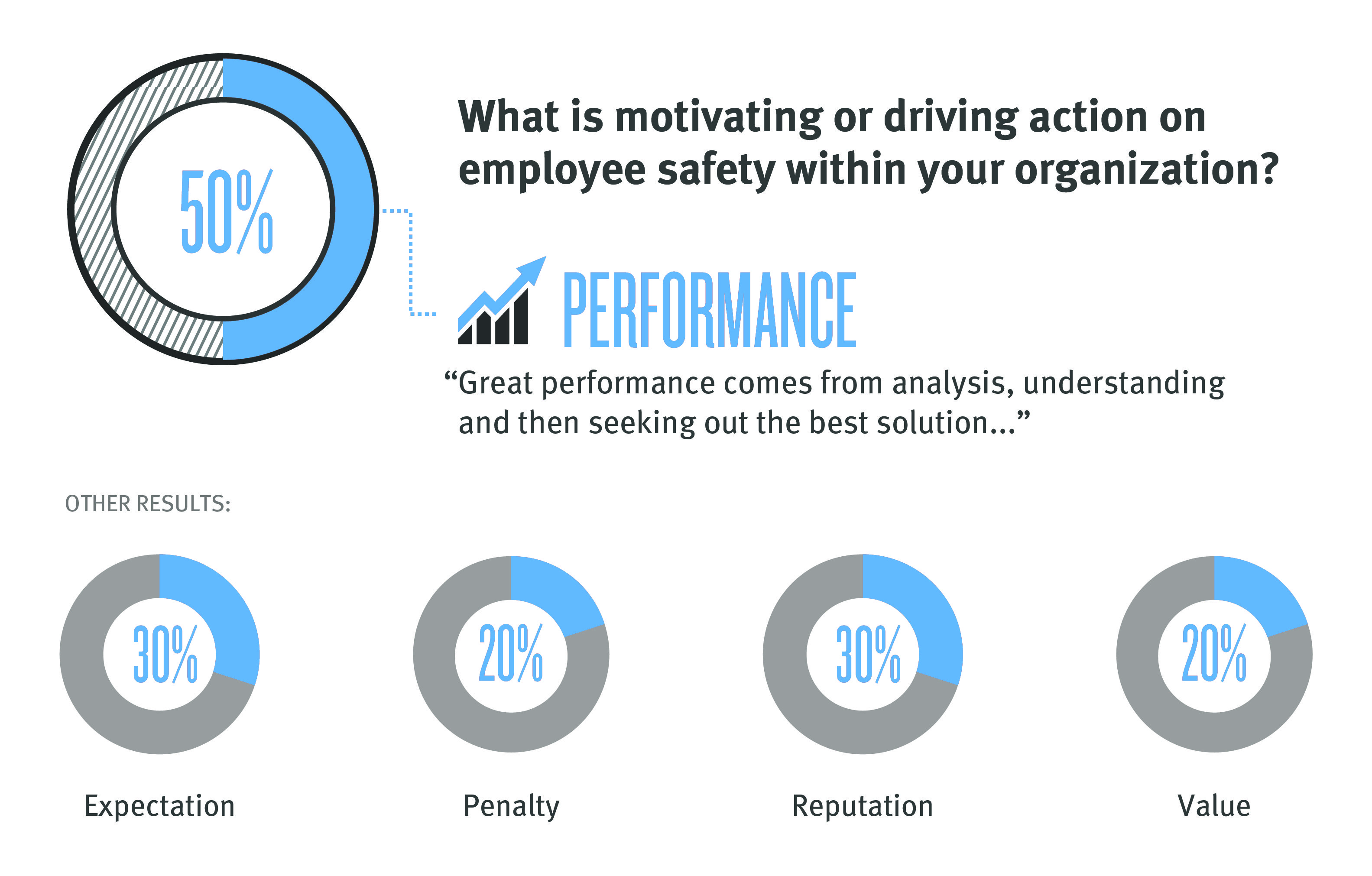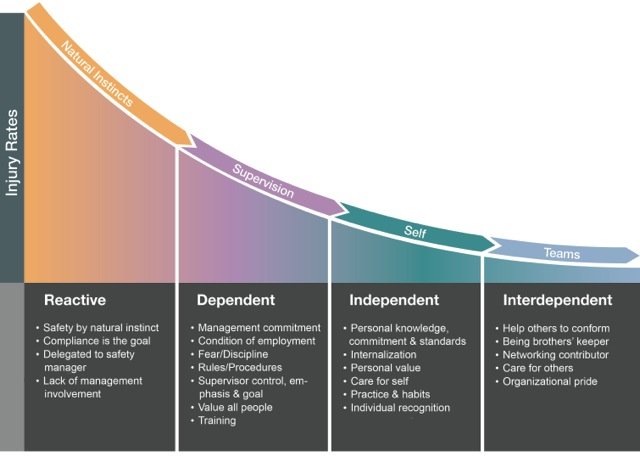 By Andrew Sharman
By Andrew Sharman
This article on innovation in workplace safety was originally published in SHP magazine in 2014 under the headline “To Boldly Go”
A new industry survey commissioned by DuPont Sustainable Solutions shows that many companies lament the lack of innovative approaches to workplace safety. Is that really the case and what can companies do to kick-start plateauing workplace safety performance?Andrew Sharman reports.
In the past, companies across international borders and industries have focused on improving behavioural safety and building effective safety management programmes. Now that the workplace safety performance of many has levelled off, they are asking themselves, ‘What next’? Are there any truly innovative, leading-edge solutions that can revitalise employee motivation for and interest in workplace safety?
In March 2014, DuPont Sustainable Solutions (DSS) commissioned a survey to find out. Mieke Jacobs, global leader of employee safety at the company, told me why: “DSS is continuously looking to improve its safety performance as well as that of its clients. As a leader in safety, we need to understand what the market wants, what the future of safety holds and how we can evolve in order to innovate in this area.”
The resulting market overview paints a qualitative picture of the current workplace safety status quo. Drawing on interviews with safety directors and vice presidents from leading multinational blue chip companies based in Europe, Asia, North and South America, as well as the Gulf region and Africa, the findings are indicative of views from a diverse range of industries. Nearly 20 different industry sectors were represented, including food, power generation, the automotive and oil and gas industries plus aviation, public transport, chemicals and engineering.
The questions posed reflected four strategic themes, identified during the hypotheses-building phase of the project: drivers and challenges; innovation and inspiration; confidence and competence; and future and focus.
By assuring the participants’ anonymity, the ensuing dialogues provided a rich source of thought and opinion from some of the most influential, international safety leaders. To avoid bias or judgement, interviewees were also not made aware that DuPont had funded the research. A number of important themes emerged from the interviews.
Current workplace safety motivators
The first was that safety performance in around half of the companies is driven by the desire to reduce injuries and fatalities through a zero harm concept. A third of respondents see this as their moral duty and felt the need to meet stakeholder and industry peer expectations.
The same percentage also believes that good safety performance is necessary to protect corporate reputation. Penalties in the form of regulation and fear of enforcement are only a relatively small motivator, being cited by only a fifth of interviewees. However, the proportion of companies to have enshrined safety in their organisational values is equally small.
Top three challenges
Asked what their top three challenges were, 60 per cent of safety leaders cited the lack of sufficient capability by senior leaders to take on a guiding role in safety or their inability to provide middle management with the right tools for safety improvement.
Approximately half struggle to maintain consistent levels of safety performance across a large, multinational organisation. Further down the scale of common challenges came the ability to keep safety at work fresh, inspiring and interesting (25 per cent) and influencing behaviours (25 per cent). An ageing workforce, governance and relevance of safety were also named, each by 20 per cent of respondents.
What’s leading edge in safety right now?
So how do organisations feel they can use the motivators they are aware of and tackle the main challenges they face? Among the innovative solutions named in the survey, the one that was cited most frequently was the psychology of safety and a focus on proactive behaviours. Various approaches were mentioned, including nudge theory and heuristics.
More than a third of companies listed gamification, technology and other novel approaches as a good way to enliven communication and conduct mindset assessments. Other innovative solutions named were predictive analytics to forecast the likelihood of the next accident (25 per cent), rolling governance programmes (20 per cent), balanced, integrated KPIs (20 per cent), competency building to improve personal judgement capabilities (20 per cent) and driver safety risk programmes (20 per cent). Six Sigma and lean methodologies were also mentioned, but only by 10 per cent of respondents.
Who provides new inspiration?
Companies have learned about these new developments by various means. More than 60 per cent of respondents use networks and peer-to-peer forums to find new inspiration for workplace safety. More than half read online blogs, articles and use Twitter for information from thought leaders such as Daniel Kahneman, Leandro Herrero, Robert Long, Daniel Pink, Dominic Cooper and Sidney Dekker.
Approximately a third of interviewees attend executive-level safety conferences such as those held by the American Society of Safety Engineers, IOSH and the Conference Board Safety Council. One respondent said: “Benchmarking and networking with peers € is the best way to see where challenges are and how people are handling them in new and unique ways.”
Confidence in safety systems
The survey interviews then moved on to asking safety leaders about their views on different areas of workplace safety in their own organisation. Fifty per cent of those surveyed judge their company safety performance by their injury and fatality rates. Formal reviews and independent audits give 35 per cent of respondents the confidence that their systems are effective, while safety observations and perception assessments provide around a third with good insight into the effectiveness of current safety efforts.
However, half the safety directors questioned believe that their senior leaders and managers lack workplace safety competency. They also cited a lack of internal capability in process safety, governance and competency among health and safety professionals. A third of respondents said that the psychology and philosophy behind safety required attention. They see the need to further develop the safety culture in their organisation through the consideration and incorporation of employee attitudes, behavioural influences and organisational thinking.


Challenges to future OSH risk management efforts
As a result, when asked about planned future efforts, 40 per cent of the safety directors mentioned the intention to focus on psychology, new behavioural safety models, human error reduction and culture. Thirty five per cent said safety leadership is also a key area.However, the same percentage believe that a change in safety culture and behaviour is stymied by a reluctance of front line managers to ‘own’ safety while more than a quarter also said that senior leaders do not demonstrate commitment to leading the safety effort. Geographical, cultural and behavioural diversity also plays a role in making a company-wide safety culture change difficult, according to a third of interviewees.Workplace safety: ‘overused’ and ‘overthought’?
The companies interviewed have all built a strong safety culture in their organisations, but feel the culture needs an invigorating impetus to help maintain and improve it. They are, almost without exception, casting around for inspiring, innovative ideas that will appeal to employees and give them a fresh approach.As one safety director put it: “Our safety maturity has changed. We’re better, stronger, though we still have more to do but there isn’t really anything for us at this advanced stage.” Another said: “We need some leading edge innovation in modern safety philosophy. (Something from) occupational psychology and (helping people in) knowing what to do, because it is ‘the right thing to do’.”But respondents believe innovative offerings are lacking in the safety industry. One interviewee said in summary: “Very little (is innovative right now in safety) to be honest. This is an area that gets overused and overthought. What else could we do?” A similar reaction came from another respondent, who added: “We don’t see much that is innovative or leading edge in safety anymore.”What the companies surveyed want is “real, helpful, practical, experienced and well-focused advice as there is a dearth of this in regulators, standard setters, researchers, academics, consultants and professional bodies. We don’t want to just reuse or recycle something tried in the 1980s, (behavioural-based safety, human factors, safety training, etc.) we want to find new, novel and inventive solutions to culture change, through care and belonging, for example.”New approaches
Although behaviour is still integral to changing workplace safety performance, safety professionals now want a solution that takes into account the psychology affecting that behaviour to achieve continuous improvement. They are also ready and willing to try innovative ideas such as new technologies to detect the mental state of employees pre-accident and the hearts and minds programme developed at Leeds University to make workplace safety fresh and appealing for everyone involved.When I asked Mieke Jacobs at workplace safety consultancy DuPont Sustainable Solutions about her experience, she said: “While the DuPont Bradley Curve is still valid, companies in many markets have reached the point where their safety performance is at a cross-roads. They have moved out of the reactive phase and have successfully achieved great safety performance, but they still depend on others (in the form of regulations, rules and discipline) within their own organisation.”

She added that in order not to stagnate, the real difficulty now lies in crossing the cultural bridge from a dependent situation to becoming independent and interdependent.”That is where psychology-based safety approaches, such as the DuPont Integrated Approach (DNA) for Safety, come in,” she continued.”They use holistic psychology and cognitive science to focus on the intrinsic motivators that determine behaviour. At DuPont, we believe that in order to build sustainable safety improvement, we need to engage people at different levels. That’s why we are now focusing on three psychological aspects of safety: the cognitive (how we think), the affective (how we feel) and the behavioural (what we do).”Solutions like these can help companies understand what drives employees’ risky actions and allow them to approach safety from a new angle. Although the survey showed that safety managers are aware of new workplace safety solutions, many are not yet using them.While they cite a lack of safety improvement tools as one of the main challenges facing their organisation, commitment to safety by senior leaders is another. This may be the barrier that is preventing many companies from trying a new approach.
However, it is clear that a new impetus is needed to achieve further safety improvements. Safety practitioners need to think outside the box to find out what triggers unsafe actions and to find solutions to changing behaviour. An awareness of the cognitive (how we think), affective (how we feel) and behavioural (what we do) aspects of psychology could well be key to future approaches. This may well be the new frontier of safety.
Andrew Sharman is principal at Andrew Sharman Risk & Safety Management and was contracted to commission this research.
Click here for more information on the DuPont Integrated Approach (DnA) programme.
Approaches to managing the risks associated Musculoskeletal disorders
In this episode of the Safety & Health Podcast, we hear from Matt Birtles, Principal Ergonomics Consultant at HSE’s Science and Research Centre, about the different approaches to managing the risks associated with Musculoskeletal disorders.
Matt, an ergonomics and human factors expert, shares his thoughts on why MSDs are important, the various prevalent rates across the UK, what you can do within your own organisation and the Risk Management process surrounding MSD’s.

 By Andrew Sharman
By Andrew Sharman



So, what does this article tell us what we don’t already know or suspect? Nothing much really. Safety must be drivn from the top down with a real commitment from those at the top and not just sound bites. ‘Safety practitioners need to think outside the box to find out what triggers unsafe actions and to find solutions to changing behaviour.’ Again, most of know the issues which create unsafe actsand conditions – for example, poor supervison, front line managers lack of ownership, poor planning and other factors such as, tight deadlines, etc. We as practitioners can do very little… Read more »